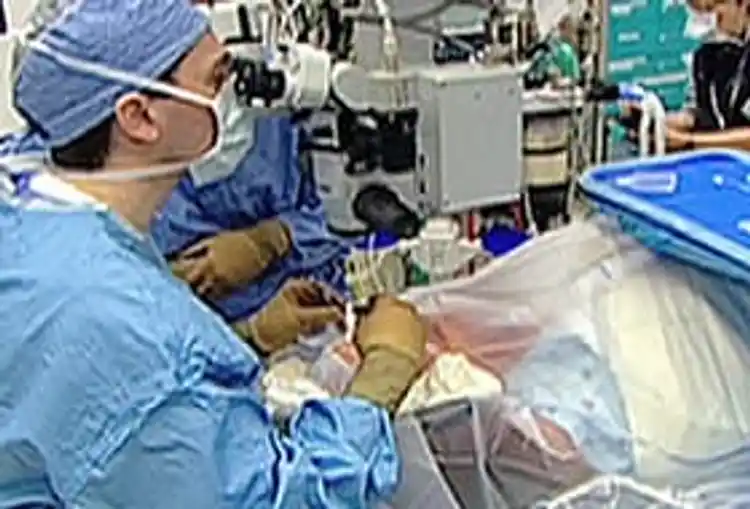DSAEK Corneal Transplant Surgery

Hide Video Transcript
Video Transcript
Narrator
When John Jolie was a boy, a companion accidentally shot his left eye with a pellet gun. Though the eye was repaired at the time, the injury cast a shadow that today nearly envelopes his vision. John Jolie
If you think being blind is not difficult, there are so many things that are missing and life becomes an embarrassment as you bump into this thing and walk into that thing and can't tell who that is that's talking to you from about 10 to 15 feet away. Narrator
With the help of an innovative procedure known as dsaek, Jolie will have the damaged portion of his cornea replaced by eye surgeon Rick Fraunfelder of Portland's Casey Eye Institute. Rick Fraunfelder, MD
This is an experimental surgery and it's not something the majority are doing, not even close to the majority of doctors are doing this surgery. Narrator
After having performed a handful of dsaek transplants, Fraunfelder is now a convert. Rick Fraunfelder, MD
The recovery is so much faster than the full thickness corneal transplant so it's very exciting. Narrator
Full thickness meaning a conventional corneal transplant where the entire cornea is removed and replaced with a donor cornea. Those can take up to a full year to heal. By transplanting only the inner layer of the cornea, dsaekis expected to reduce healing time to a few months. Rick Fraunfelder, MD
The advantages of dsaek over a full thickness transplant is that we aren't putting 16 stitches in the cornea. We aren't putting any stitches in the cornea. Narrator
Doctors make a small incision on the side of the eye and replace only the damaged portion of the back inner layer of the cornea with cells from a donor. These cells are then pushed into place using a pocket of air. Rick Fraunfelder, MD
Those little cells that were transplanted start to pump fluid immediately out of the cornea and that creates a suction and allows it to suck up against the back of the host cornea. Narrator
The procedure, however, is suited to only certain types of vision problems, those where only the back layer of the cornea is damaged. Long-term complications and effectiveness of the procedure are still being studied, but Dr. Fraunfelder says based on his experience it's a good bet that dsaek will come out a winner. Rick Fraunfelder, MD
I do think it's a major evolution in corneal transplant surgery and if doctors learn how to do it they will become convinced that this is the way to do corneal transplants. Narrator
John Jolie clearly agrees. John Jolie
I know it's going to be a success. There is absololutely no question whatsoever. Narrator
For WebMD, I'm Damon Meharg.